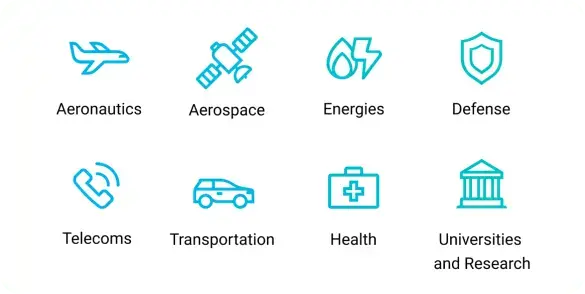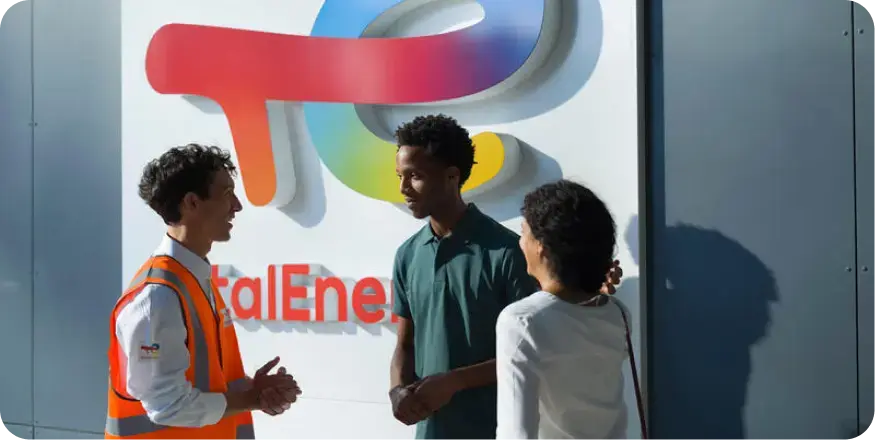GRIF I About GRIF - Software suite of excellence designed to determine RAMS (Reliability, Availability, Maintainability, Safety) indicators
Our expertise to support your reliability, availability and maintainability analyses
GRIF (GRaphical Interface for reliability Forecasting) is a software suite of excellence that determines the fundamental indicators of reliability and dependability (Reliability - Availability - Performance - Safety).
The result of more than 40 years of Research and Development within TotalEnergies, GRIF features mature, high-performance calculation engines with modeling capabilities that will meet the requirements of all your reliability studies, whatever your field of activity.
Contact us to find out more about GRIF and its modules (Free service)
GRIF in Key Figures
Present in 18 countries
across 5 continents
Over 40 years’ recognized expertise
in reliability and availability
2 powerful calculation engines,
with fast and accurate results
Software suite comprising 3 packages and 12 modules
With GRIF, you choose the most appropriate modeling technique to resolve the system you need to study (block diagrams, fault trees, Markov graphs, Petri nets....).
GRIF is equipped with the ALBIZIA (Boolean and Markovian packages) and MOCA-RP (Simulation package) calculation engines, as well as pre-integrated architectures to facilitate the modeling and simulation of any reliability study.
Our software suite is perfectly adapted ffor the complex analysis of most problems because of the variety and adaptability of its modeling languages. If your objectives have not been met, it’s really easy to test different architecture variants or modify the input parameters in order to quickly measure the impact on your results.

Recognized expertise in system modeling and event prediction
- Reliability engineering is a key discipline in the modeling and design of industrial equipment. Historically calculated by hand, the first algorithms were developed in the 1980s on Jean-Pierre Signoret’s initiative, a RAM Engineer working at Elf, to analyze systems using Markovian approaches, fault trees, Petri nets and Monte-Carlo simulation.
- In the 1990s, the discovery of Binary Decision Diagrams (BDD) heralded a new era in static modeling using a Boolean approach. This paved the way for the first calculation engines on which ALBIZIA would be based. Around the same time, the MOCA-RP engine was launched, combining the techniques of Stochastic Petri Nets (SPNs) and Monte Carlo Simulation to facilitate the modeling of complex dynamic systems.
- In the early 2000s, at the same time that Elf was being integrated into the TotalEnergies group (formerly Total), the first GRIF modules were being marketed: BFiab, Tree, Reseda, Markov and Petri (2005).
- The GRIF software suite has gradually been perfected, and is now one of the most comprehensive decision-support tools on the market:BStoK (2006), SIL (2010), ETree (2012), Petro, Bool (2013), Risk and Flex (2018).

IT solution suited to all fields of activity

GRIF is designed for any field of activity
Whether for an oil platform, aircraft, train or water supply system, GRIF evaluates the reliability and availability of any system using a range of computational techniques. The GRIF software suite offers a wide variety of calculation methods so that users can select the most appropriate (analytical, simulation, etc.), according to the system being modeled.
GRIF at TotalEnergies

GRIF is used at TotalEnergies
to conduct Production Availability Studies and Probabilistic Safety Studies based on reliability models (also known as “probabilistic mathematics”). It is the reference modelling tool used by our Reliability, Availability and Maintainability (RAM), Safety (HSE), Production and Maintenance engineers responsible for assessing the reliability, availability and maintainability of our production systems.
With our software suite, you can check if the reliability of the safety instrumented functions of the HIPS (ultimate safety barrier in case of overpressure, overflow, etc.) complies the SIL (Safety Integrity Level) requirements. To prevent any accidents related to a company’s operations, the chosen architecture and associated maintenance measures must provide an effective response to the undesirable event.
By modeling the architecture of an installation, its behavior (failures, interactions between equipment, etc.) and its operating conditions (logistical support, maintenance policies, etc.), GRIF provides a production level forecast for this system throughout its life cycle.
Lastly, GRIF can be used as a decision-support tool to assess a project’s profitability through the predictive evaluation of its performance.

Modeling tools key to our pledge to support the energy transition
TotalEnergies is a global multi-energy production and supply company, aiming to be a world leader in the energy transition, so we are continuously adapting and updating GRIF modules to conduct predictive and preventive studies in many sectors of activity (oil and gas plants, wind farms, development of battery charging stations, etc.).


